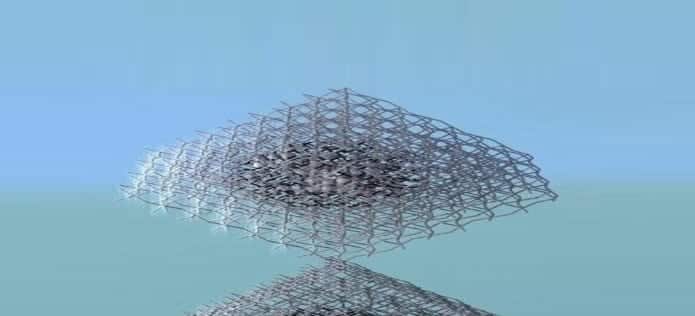For the very first time engineered hybrid crystal created for a powerful hyper efficient LED
Researchers in The Edward S. Rogers Sr. Department of Electrical and Computer Engineering tried combining two promising solar cell materials for the very first time and thus invented one of the most novel material which has opened up new frontiers for high efficiency lighting.
Suppose, a person has plain oatmeal cookies and a bowl of chocolate chips. Individually, these both have their own identities and taste, however just imagine if these both are combined together, you would definitely get an awesome mixture, isn’t it? Researchers have tried to do the same thing with the two promising solar cell materials to develop a novel Hyper efficient light emitting crystal.
Creation of Hyper-efficient LED emitting crystals:
Eventually the team formulated a method wherein they were able to insert the colloidal quantum dots, the luminescent nanoparticles which played the role of the chocolate chips, into Perovskite, this material played the role of the oatmeal cookies.
Perovskite is a material that allows the electrons to move easily through them with the least amount of loss or capture by defects and it is a kind of material that can be fabricated from solution.
As per a report from Science Daily, ‘the combination resulted in formation of a black crystal that relied on the Perovskite matrix to ‘funnel’ electrons into the quantum dots which further converts the electricity to light.’
One of the authors leading the study was Xiwen Gong who is also a PhD candidate working with Professor Ted Sargent. He said: “It’s a pretty novel idea to blend together these two optoelectronic materials, both of which are gaining a lot of traction. We wanted to take advantage of the benefits of both by combining them seamlessly in a solid-state matrix.”
The report also adds that the ‘Hyper-efficient LED technologies could now pave its way from the visible-light LED bulbs in every home to new displays and even to gesture recognition by using near infrared wavelengths. ‘
Dr. Riccardo Comin, a post-doctoral fellow in the Sargent Group says: “When you try to jam two different crystals together, they often form separate phases without blending smoothly into each other. We had to design a new strategy, to convince these two components to forget about their differences and to rather intermix into forming a unique crystalline entity.”
During the study, achieving ‘Heteroepitaxy’ was the the major challenge faced by researchers. ‘Heteroepitaxy’ means to get the orientation of these two different crystalline structures lined up. Thus, Gong, Comin and their entire team engineered a method through which they were able to connect the atomic ‘ends’ of the two crystalline structures so as to align then smoothly, without the formation of defects at the seams.
Co-author of the study who contributed to the work, Dr. Zhijun Ning, also a post-doctoral fellow at University of Toronto and now a faculty member at ShanghaiTech explained that: “We started by building a nano-scale scaffolding ‘shell’ around the quantum dots in solution, then grew the perovskite crystal around that shell so the two faces aligned.”
The ultimate outcome of the study was a heterogeneous material which is the pioneer member of a new family that comprises of highly energy efficient near infrared LEDs.
Infrared LEDs can be utilized to improve night vision technology, to increase speed of telecommunications and also to better bio-medical imaging.
Usually a substance would partly re-absorb the same spectrum of energy which it emitted resulting in a net efficiency loss, this is self-absorption property of a substance. However, this kind of combination of two materials, invented by the research team, solves the problem of self absorption .
Comin says: “These dots in perovskite don’t suffer re-absorption, because the emission of the dots doesn’t overlap with the absorption spectrum of the perovskite.”
The novel ‘Hyper-efficient light emitting crystal’ is compatible with the solution processing and researchers say they have purposely designed it in this manner with the aim of allowing it to easily integrate with the most inexpensive and commercially practical ways of manufacturing solar films and devices.
Gong, Comin and their team plan to build and test the hardware by taking advantage of this concept, which they have already proved by creating the innovative ‘Hyper-efficient light emitting crystal’.
Gong says: “We’re going to build the LED device and try to beat the record power efficiency reported in the literature.”
The Ontario Research Fund Research Excellence Program, the Natural Sciences and Engineering Research Council of Canada (NSERC), and the King Abdullah University of Science & Technology (KAUST) all were the supporters of this work.
The study and its findings have been published in the international journal Nature on July 15, 2015.
